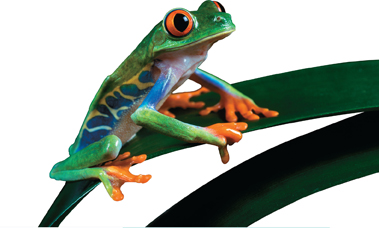Changes Within Phyla: Themes and Variations Within each phylum, different groups represent different variations on the basic body plan themes that have evolved over time. Land vertebrates, for example, typically have four limbs. Many, such as frogs, walk (or hop) on four limbs that we call “legs.” Among birds, the front limbs have evolved into wings. In many primates, the front limbs have evolved into what we call “arms.” Both wings and arms evolved through changes in the standard vertebrate forelimb.
Evolutionary Experiments In a sense, you can think of each phylum's body plan as an evolutionary “experiment,” in which a particular set of body structures performs essential functions. An organism's first appearance represents the beginning of this “experiment.” The very first versions of most major animal body plans were established hundreds of millions of years ago, as you'll learn in the next chapter. Ever since that time, each phylum's evolutionary history has shown variations in body plan as species have adapted to changing conditions. If the changes have enabled members of a phylum to survive and reproduce, the phylum still exists. If the body plan hasn't functioned well enough over time, members of the phylum, or particular groups within the phylum, have become extinct.

FIGURE 25–12 Limb Variations Birds have evolved front limbs specialized as wings, whereas frogs have evolved four “legs.”

25.2 Assessment

-
Review List eight features of animal body plans.
Infer How is the embryology of echinoderms similar to that of vertebrates? What might this similarity indicate about their evolutionary relationship?
-
Review What two features define animal phyla?
Relate Cause and Effect What happens to a phylum over time if its body plan doesn't enable its members to survive and reproduce?
WRITE ABOUT SCIENCE
Explain the description of a body plan as an evolutionary “experiment.” In your explanation, describe the difference between successful and unsuccessful body plans in terms of the different outcomes.

Table of Contents
- Formulas and Equations
- Applying Formulas and Equations
- Mean, Median, and Mode
- Estimation
- Using Measurements in Calculations
- Effects of Measurement Errors
- Accuracy
- Precision
- Comparing Accuracy and Precision
- Significant Figures
- Calculating With Significant Figures
- Scientific Notation
- Calculating With Scientific Notation
- Dimensional Analysis
- Applying Dimensional Analysis




